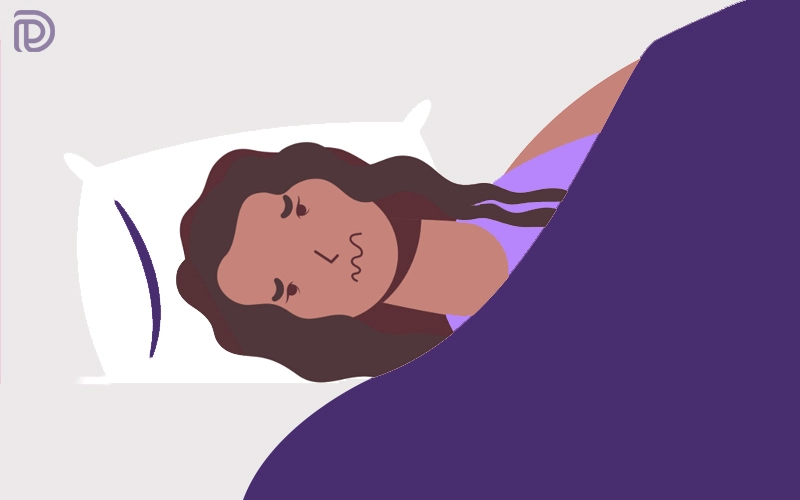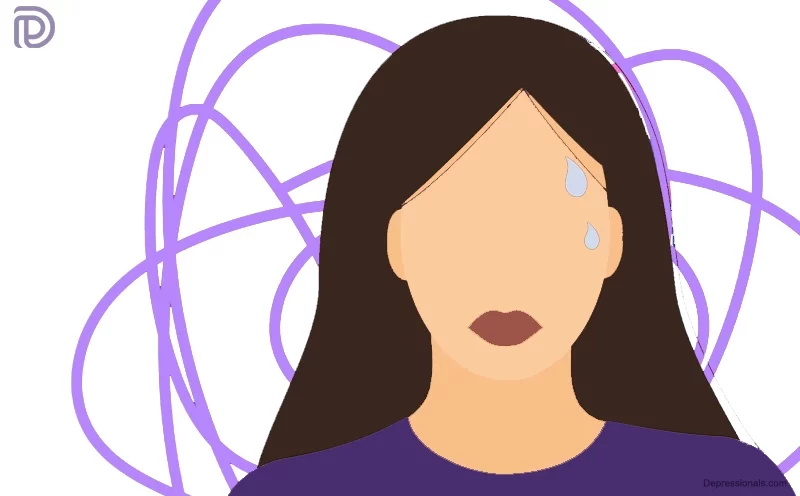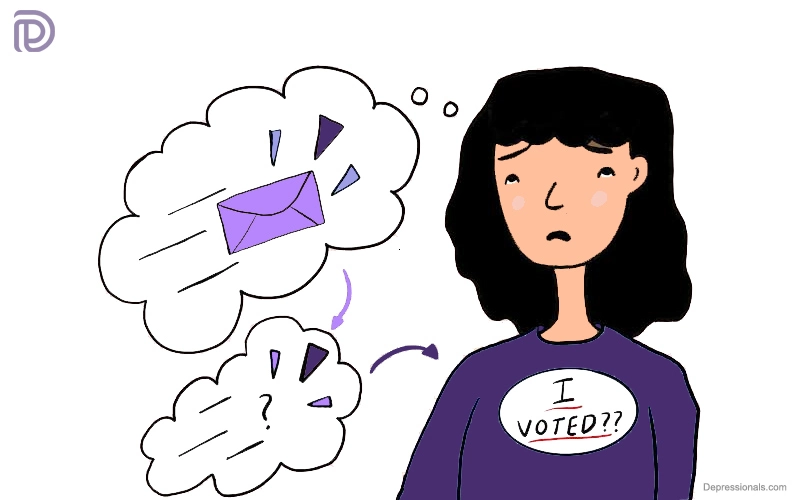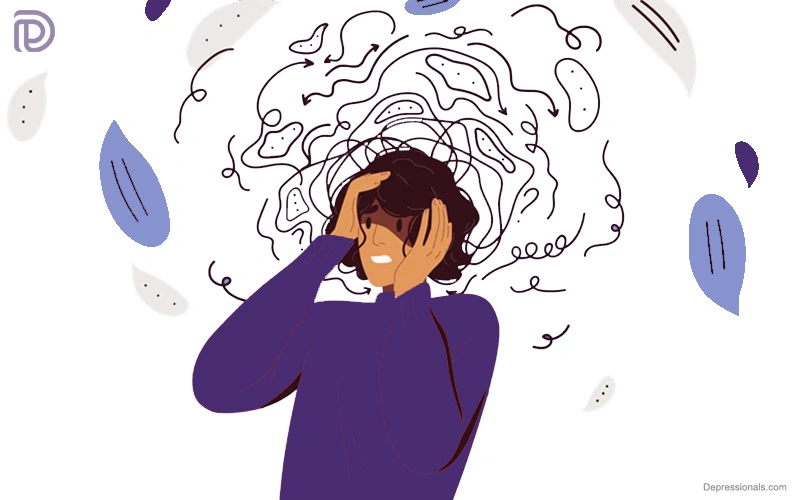Although most people think agoraphobia is simply anxiety about open spaces, it’s actually more complex than that. When someone has agoraphobia, they may be afraid to leave the house, travel by public transportation and visit a shopping mall.
What is agoraphobia?
A person with agoraphobia avoids places and situations that make them feel:
- Trapped
- Helpless
- Panicked
- Embarrassed
- Scared
People who suffer from agoraphobia will experience panic attack symptoms such as nausea and rapid heartbeat when confronted with stress. In some cases, these symptoms may occur even before the dreaded situation arises.
Some people are so debilitated by the condition that they are unable to do even routine daily activities, such as going to the grocery store or bank and tend to stay at home the whole time.
In the United States, 0.8% of adults suffer from agoraphobia, according to estimates from the National Institute of Mental Health (NIMH). The severity of most cases is around 40%. Symptoms of agoraphobia are severe when the condition is advanced.
Agoraphobics are aware that their fears are irrational, but they’re unable to change them. This can impact their performance and their relationships with others at the workplace or school.
As soon as you suspect that you suffer from agoraphobia, make sure you receive treatment. Your symptoms can be managed with treatment and your quality of life can be improved. Therapy, medication, and lifestyle changes may all be necessary to treat your condition, depending on its severity.
Read: Autophobia
Is agoraphobia common?
Approximately 1% to 2% of Americans suffer from agoraphobia. Adolescents who suffer from it account for about 2% of the population. There is a higher prevalence of agoraphobia among women. Usually, it begins before 35 years of age.
Symptoms of agoraphobia
Common agoraphobia symptoms are:
- Having anxiety about leaving the house for long periods of time
- Being afraid to be alone in a social situation
- Scared of making mistakes in a public place
- Avoiding locations where it is difficult to escape, such as an elevator or a car
- Isolated from others
Panic attacks are often associated with agoraphobia. The symptoms of panic attacks are common among people suffering from anxiety and other mental disorders. Severe physical symptoms of panic attacks include:
- Chest pain
- Racing heart
- Shortness of breath
- Dizziness
- Trembling
- Choking
- Sweating
- Hot flashes
- Chills
- Nausea
- Diarrhea
- Numbness
- Tingling sensations
People who experience this disorder may experience panic attacks whenever they encounter an uncomfortable situation, thus triggering additional anxiety attacks.
Read: COVID Anxiety Syndrome
Types of agoraphobia
Agoraphobia can be diagnosed without panic disorder, even though many people with the disorder also suffer from panic disorder.
The person still fears being trapped in an embarrassing or difficult situation where escape is difficult. It is generally not a concern for them to have full-blown panic attacks.
Instead, they may fear that they will experience another distressing anxiety symptom or a severe physical ailment, such as vomiting or a severe migraine. People may be afraid of losing control of their bladders in public or fainting without help.
It is estimated that between a third and a half of individuals diagnosed with panic disorder will develop agoraphobia as well. An estimated 0.9% of the U.S. adult population suffers from agoraphobia each year, according to the National Institute of Mental Health (NIMH). Adults typically develop this condition, though adolescent cases have been reported as well.
What causes agoraphobia?

It is not known what actually causes agoraphobia. The risk of developing agoraphobia is increased by several factors. Some of these factors are:
- Depression
- Other phobias, such as social phobia and claustrophobia
- Generalized Anxiety Disorder (GAD) or Obsessive-Compulsive Disorder
- History of physical abuse
- Substance abuse problem
- Family history of agoraphobia
Women are more likely to have the agoraphobia condition than men. Usually, it shows up during early adulthood, usually by the age of 20. A person can present with symptoms of this condition at any age.
Also, check: Side Effects of Overthinking
How is agoraphobia diagnosed?
The diagnoses of agoraphobia are based on signs and symptoms. You will have to explain your symptoms to your doctor, including when they began and how often you experience them. Your doctor will also ask about the history of your health and your family.
A blood test may also be performed to exclude the physical causes of your symptoms.
The Diagnostic and Statistical Manual of Mental Disorders (DSM) of the American Psychiatric Association may be used to test for agoraphobia because certain symptoms must meet certain criteria. Health care providers use the DSM to diagnose mental health issues.
In order to be diagnosed with agoraphobia, you must feel intense anxiety or fear in at least two of the following situations:
- Public transportation, such as bus or a train
- Open spaces, such as parking lot or a store
- Enclosed spaces, such as an elevator or car
- Being in a crowd
- Traveling alone
A patient with panic disorder and agoraphobia must also meet other criteria for diagnosis. A recurrent panic attack with at least one of the following symptoms:
- Anxiousness about having more panic attacks
- Anxiety about having a panic attack, such as losing control or heart attack
- Behavioral changes caused by panic attacks
It will not be possible to diagnose agoraphobia if your symptoms are caused by another disorder. A substance abuse disorder or another disorder cannot also cause this illness.
Read: Separation Anxiety Disorder
Agoraphobia treatment
Agoraphobia can be treated in a number of ways. The most likely course of treatment will be a combination of therapy, medication, and lifestyle changes.
Therapy
Psychotherapy
The practice of psychotherapy also referred to as talk therapy, requires regular sessions with a psychologist or other mental health professional. By discussing your fears, you will be able to identify any underlying issues that may be contributing to them.
A combination of psychotherapy and medication is often the most effective treatment. As soon as you overcome your anxieties and fears, the treatment can generally be stopped.
Cognitive behavioral therapy (CBT)
Cognitive-behavioral therapy (CBT) is one of the most popular methods of treating agoraphobia. With CBT, you can gain a better understanding of the views and distorted feelings associated with agoraphobia.
Furthermore, you can learn how to deal with stressful situations by replacing distorted thoughts with healthier ones, thereby gaining some control back over your life.
Exposure therapy
Exposure Therapy is also an effective way to overcome your fears. This therapy allows you to gradually and gently expose yourself to things you’re afraid of. This may lead to a decrease in your fear over time.
Read: How To Get Over a Phobia
Medications
Medicines may relieve the symptoms of agoraphobia and panic attacks. Some of these include:
- Selective serotonin reuptake inhibitors, such as fluoxetine (Prozac) or paroxetine (Paxil)
- Selective serotonin and norepinephrine reuptake inhibitors, such as duloxetine (Cymbalta) or venlafaxine (Effexor)
- Tricyclic antidepressants, such as nortriptyline (Pamelor) or amitriptyline (Elavil)
- Anti-anxiety medications, such as clonazepam (Klonopin) or alprazolam (Xanax)
Lifestyle changes
Doing a healthier lifestyle may help reduce anxiety in everyday life, but they won’t necessarily treat agoraphobia. Consider the following suggestions:
- Regular exercise increases the production of brain chemicals that enhance your mood and increase relaxation
- Consume a balanced diet rich in whole grains, vegetables, and lean protein to improve your overall wellbeing
- Make a habit of deep breathing or practicing daily meditation to reduce anxiety
Avoid supplementing with herbs or dietary supplements during treatment. Natural treatments like these may have adverse effects on prescribed medications, and they do not cure anxiety.
Recommended: Multiple Strategies To Control Overthinking
What can I do to reduce my agoraphobia risk?
The prevention of agoraphobia has not been proven. When it is in its earliest stages, it is easier to manage. You may become more fearful the more you avoid situations. Those who suffer from severe agoraphobia cannot leave their home at all and rely entirely on others for assistance. The disorder can also develop into depression, alcohol or drug abuse, and other mental disorders if left untreated. The importance of seeking mental health care early cannot be overstated.
Outlook of agoraphobia
Agoraphobia is sometimes difficult to prevent. It is important to seek treatment for anxiety disorders or panic disorders as early as possible. There is a good chance that you can recover with treatment. If you think you may have this disorder, don’t hesitate to seek treatment. The treatment is usually easier and faster when it’s started earlier.
You may not be able to participate in everyday activities as a result of this disorder. A cure is not available, but treatment can greatly reduce your symptoms and ensure a better quality of life.






I¦ve been exploring for a bit for any high quality articles or blog posts on this kind of space . Exploring in Yahoo I ultimately stumbled upon this site. Reading this information So i am happy to show that I have an incredibly good uncanny feeling I discovered exactly what I needed. I most surely will make certain to do not put out of your mind this web site and give it a glance on a constant basis.
The information you have provided is very useful to me.
You covered every aspect of this phobia well. Thanks